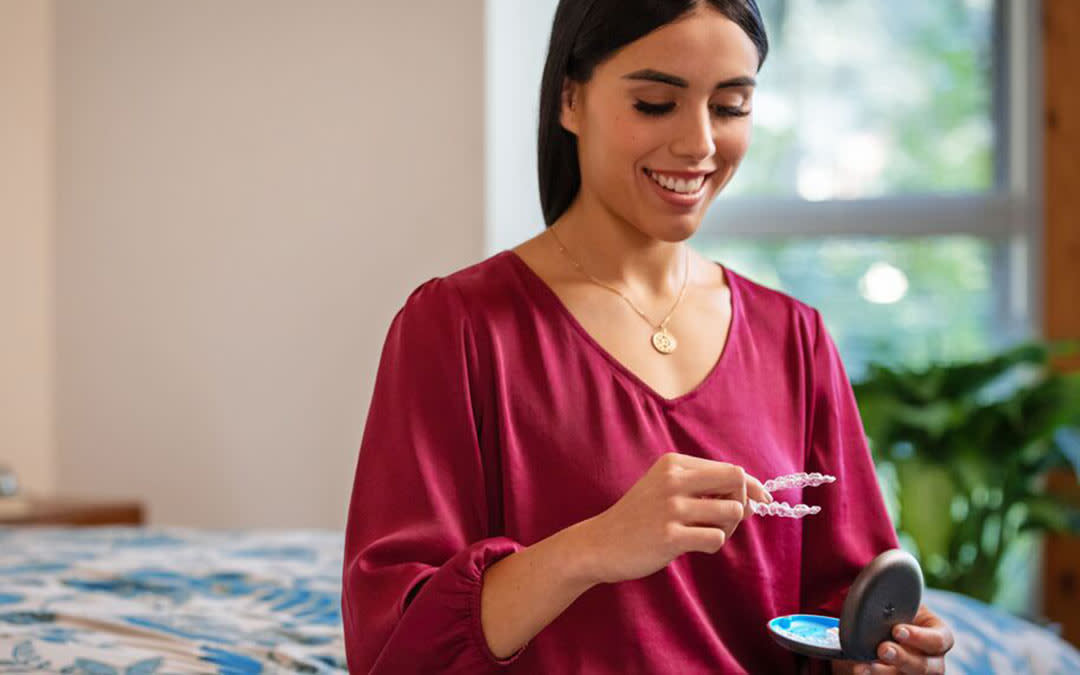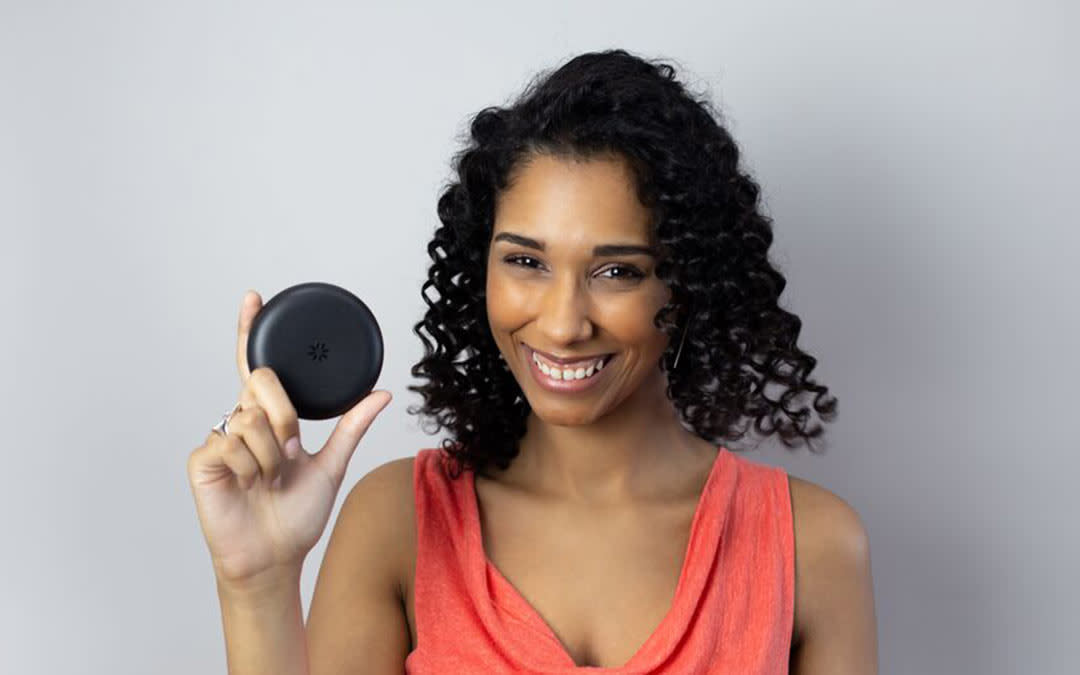Invisalign is a brand of clear aligners used to straighten teeth—and one you've probably heard of. If you're not sure what it means, you're in the right place. This guide will explain what Invisalign treatment is, how it works, and whether it might be right for you.
What is Invisalign treatment and how does it work?
Invisalign treatment is an orthodontic treatment that uses a series of clear, removable aligners to gradually straighten your teeth. Each aligner is customized to fit your mouth and works by applying gentle, consistent pressure to move your teeth into the desired position over time.1 To stay on track, most people wear their aligners for 20-22 hours a day.
Invisalign aligners vs. Braces
To understand whether Invisalign treatment is the right option for you, it helps to see how it compares to other treatments like traditional metal braces. Both Invisalign aligners and braces can straighten teeth effectively, but they work in different ways. Invisalign treatment uses clear, removable aligners that are transparent, while traditional braces rely on fixed metal brackets and wires to shift teeth into their desired positions.
The main benefits of Invisalign treatment include:
Invisalign aligners offer a discreet appearance that is transparent.
They can be removed for eating and cleaning, making daily tasks easier.
Unlike braces, there are no food restrictions with Invisalign aligners, so you can continue to enjoy your favorite meals.
Patients undergoing Invisalign treatment require 30% fewer doctor visits on average than patients with fixed appliances like braces.4
Curious how they compare? Check out the Invisalign Treatment Comparison Chart for a side-by-side look at Invisalign aligners vs. braces.




